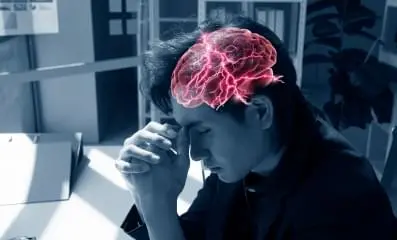
A Deep Dive Into Histrionic Personality Disorder
Clinically Reviewed by:
Histrionic personality disorder (HPD) is a mental health condition marked by attention-seeking and dramatic behaviors. Individuals with HPD often feel uncomfortable when not the center of attention, which can deeply affect their relationships and daily lives. Understanding the signs and symptoms is vital for early intervention.
This blog delves into the key traits, diagnostic criteria, and treatment options for HPD. By exploring the causes, risk factors, and impact on relationships, we provide essential insights to help manage and address this disorder. Keep reading to learn more about how HPD affects individuals and their lives.
Key Takeaways
Histrionic Personality Disorder involves intense emotional responses and a constant need for attention and approval. Key points discussed in this blog are:
- Early intervention is crucial in managing HPD, with therapy playing a central role in treatment.
- Genetics, childhood trauma, and societal influences can all contribute to the development of HPD.
- Proper diagnosis and tailored treatment plans help individuals manage HPD and improve their quality of life.
Are you struggling with emotional challenges or attention-seeking behaviors? Call Indiana Center for Recovery at (844) 650-0064 for expert help and support.

Definition Of Histrionic Personality Disorder
Histrionic personality disorder (HPD) is a mental health condition where individuals seek attention and approval. They often feel uncomfortable when not the center of attention. These individuals may exhibit dramatic, overly emotional, or exaggerated behaviors to draw attention.
People with HPD may struggle with relationships due to their emotional intensity. They often appear to be shallow or easily influenced by others. Treatment may include therapy to help manage emotional responses and improve social functioning.
Core Symptoms And Behavioral Traits
Histrionic personality disorder (HPD) is characterized by attention-seeking behavior and emotional instability. People with this disorder often exhibit different symptoms and traits. These typically emerge in early adulthood and are linked to low self-esteem.
Symptoms Of Histrionic Personality Disorder
- Excessive need for attention leads to dramatic behavior in different situations.
- Frequent mood swings and emotional outbursts, including temper tantrums.
- Depression and anxiety are particularly linked to low self-image.
- Panic attacks and physical symptoms tied to stress or emotional upset.
- There is a higher risk of developing other mental health problems, such as anxiety.
Traits Of Histrionic Personality Disorder
- Histrionic behavior and exaggerated emotions in social settings.
- Focus on physical appearance, often using it to gain attention.
- Provocative behavior and flirtatiousness to attract attention.
- Difficulty forming long-term relationships due to unstable self-images.
- A tendency to manipulate situations to maintain the focus on themselves.
Recognizing the symptoms and personality traits is essential for early intervention. Proper treatment can help manage the condition and improve the quality of life.
Diagnostic Criteria
The diagnosis of histrionic personality disorder follows criteria outlined in the DSM-5, which helps professionals assess specific symptoms. Understanding these criteria is essential for distinguishing this disorder from others within the broader range of psychiatric disorders.
DSM-5 Criteria
The DSM-5 outlines specific symptoms for diagnosing histrionic personality disorder, including a need for attention, rapid emotional shifts, and seductive behavior. These traits fit within the dramatic personality disorder category, influencing how clinicians assess a person’s psychological health.
Assessment And Diagnostic Tools
Various diagnostic tools, including interviews and questionnaires, assess histrionic personality disorder. These tools help clinicians differentiate it from other psychiatric disorders, ensuring the diagnosis aligns with the criteria in DSM-5-TR for accuracy and effective treatment planning.
Differentiating From Other Personality Disorders
Differentiating histrionic personality disorder from other personality disorders can be challenging, especially within Cluster B. It shares similarities with borderline personality disorder, particularly emotional instability, but is distinct due to excessive attention-seeking behaviors and a dramatic presentation. Recognizing these differences is crucial.
Histrionic personality disorder can also overlap with antisocial personality disorder and narcissistic personality disorder. However, people with antisocial personality disorder often exhibit disregard for others, while narcissistic individuals focus on self-importance. In contrast, histrionic individuals crave attention and approval, making them more focused on external validation than self-interest.
Other personality disorders, such as obsessive-compulsive personality disorder, schizoid personality disorder, and avoidant personality disorder, can sometimes resemble histrionic personality disorder due to social difficulties. However, obsessive-compulsive disorder centers on rigidity and control, whereas avoidant personality disorder is rooted in fear of rejection. Understanding these distinctions is vital for a correct diagnosis and treatment plan.
Causes And Risk Factors
Understanding the causes and risk factors helps identify the roots of histrionic behavior. Genetic influences, environmental factors, and psychological contributors shape its development. These aspects highlight the role of family members, childhood trauma, and social activities in influencing this disorder.
Genetic Influences
Genes play a significant role in developing histrionic personality disorder. A family medical history of psychological disorders increases the risk. Children with parents who struggle with emotional manipulation may inherit related traits, impacting interpersonal relationships in late adolescence and adulthood.
Environmental Factors
Childhood trauma, including child abuse, can disrupt emotional development. Social norms in places emphasizing external validation may shape behavior. Close relationships in childhood and adolescence significantly influence the desire for the attention of others in adulthood.
Psychological And Social Contributors
Unstable interpersonal relationships, particularly with romantic partners, shape emotional behavior. Childhood experiences and societal pressure to conform can worsen mental health issues. Intense focus on family or friends may lead to emotional manipulation for approval in social activities.
Impact On Life And Relationships
HPD has a huge impact on everyday life and relationships. It influences intimate relationships and professional dynamics in adults. Studies reveal that inappropriate sexual behavior and provocative ways often cause trouble in maintaining true self-expression and meaningful connections.
Personal And Professional Challenges
People with HPD face trouble balancing personal and professional challenges. Their actions and opinions can create misunderstandings at work and at home. Cases showing inappropriate behavior affect their ability to maintain boundaries, hindering opportunities and growth in everyday situations.
Interpersonal Dynamics
Interpersonal dynamics for men and women with this disorder often involve provocative ways. They may struggle to form deep bonds with potential romantic interests or partners. Studies highlight how their actions impact relationships, preventing self-reflection and understanding of their true self.
Treatment Approaches
Histrionic personality disorder requires special treatment provided by experienced mental health professionals. Psychotherapy, including talk therapy, is often the first approach for managing symptoms. Healthcare providers may also recommend cognitive behavioral therapy (CBT) or psychodynamic therapy to explore emotional triggers and improve behavior patterns.
Group therapy and support groups can help individuals with social interactions and emotional expression. Dialectical behavior therapy (DBT) teaches coping strategies for emotional regulation. Mental health services aim to provide consistent support through professional help and collaboration with doctors or therapists.
In some cases, medication may complement therapy to address associated symptoms. Healthcare providers prescribe medicines carefully to manage anxiety or depression. Working with doctors and therapists ensures a comprehensive treatment plan for better outcomes.
Frequently Asked Questions (FAQ)
Histrionic personality disorder (HPD) makes people seek constant attention. They feel uncomfortable when they’re not the center of attention. To get noticed, they might act overly dramatic or exaggerate their feelings.
A common sign of HPD is using their appearance to get attention. They may dress in a flirtatious or flashy way. They often believe their value depends on how others see them.
People with HPD can have fast-changing emotions. Their feelings may seem shallow or exaggerated. These changes often happen based on the people around them or the situation.
HPD (histrionic personality disorder) and BPD (borderline personality disorder) are different mental health conditions. People with HPD crave attention and approval from others. They often act dramatic or overly emotional to get noticed.
BPD, on the other hand, causes unstable emotions and relationships. People with BPD often fear being abandoned and act impulsively. They can have quick mood changes and struggle to control their emotions.
While both involve emotional struggles, their main symptoms are different. HPD is about seeking attention, while BPD focuses on unstable feelings and relationships. Knowing these differences can help people get the right support and care.
Histrionic personality disorder (HPD) makes people seek constant attention. They feel uncomfortable when they’re not the center of attention. To get noticed, they might act overly dramatic or exaggerate their feelings.
A common sign of HPD is using their appearance to get attention. They may dress in a flirtatious or flashy way. They often believe their value depends on how others see them.
People with HPD can have fast-changing emotions. Their feelings may seem shallow or exaggerated. These changes often happen based on the people around them or the situation.
A doctor or therapist diagnoses histrionic personality disorder (HPD) by examining the person’s behavior, feelings, and thoughts. Doctors use rules from the DSM-5 to help make the diagnosis.
To be diagnosed with HPD, a person must have at least five symptoms. These symptoms include acting overly dramatic, seeking attention, and having shallow emotions. The doctor also thinks about how these traits affect the person’s life.
The doctor will ask questions and talk to the person and their family. Sometimes, the doctor might use forms to get more information. This helps them understand the behavior and make a correct diagnosis.






 100% Confidential
100% Confidential